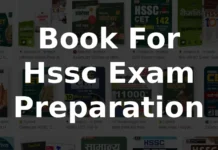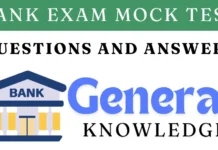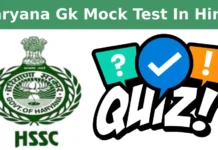Question 1: Who was the first President of India?
• a) Dr. Rajendra Prasad
• b) Dr. S. Radhakrishnan
• c) Jawaharlal Nehru
• d) Mahatma Gandhi
Answer: a) Dr. Rajendra Prasad
Explanation: Dr. Rajendra Prasad served as the first President of India from 1950 to 1962 and was a prominent leader during the Indian independence movement.
Question 2: The Indian National Congress was formed in which year?
• a) 1885
• b) 1905
• c) 1915
• d) 1947
Answer: a) 1885
Explanation: The Indian National Congress was founded in 1885 and played a crucial role in India’s struggle for independence.
Question 3: Which article of the Indian Constitution provides for the abolition of untouchability?
• a) Article 15
• b) Article 17
• c) Article 21
• d) Article 25
Answer: b) Article 17
Explanation: Article 17 of the Indian Constitution abolishes untouchability and forbids its practice in any form.
Question 4: The first Battle of Panipat was fought in which year?
• a) 1526
• b) 1556
• c) 1761
• d) 1803
Answer: a) 1526
Explanation: The first Battle of Panipat took place in 1526 between the forces of Babur and Ibrahim Lodi.
Question 5: The term ‘Green Revolution’ is associated with which field?
• a) Industrialization
• b) Agriculture
• c) Education
• d) Technology
Answer: b) Agriculture
Explanation: The Green Revolution refers to the period of agricultural transformation that occurred in India during the 1960s and 1970s, characterized by the use of high-yielding variety seeds and increased use of fertilizers.
Question 6: Who was known as the ‘Iron Man of India’?
• a) Mahatma Gandhi
• b) Sardar Vallabhbhai Patel
• c) B.R. Ambedkar
• d) Jawaharlal Nehru
Answer: b) Sardar Vallabhbhai Patel
Explanation: Sardar Vallabhbhai Patel earned the title ‘Iron Man of India’ for his leadership in unifying the country after independence.
Question 7: The capital of India was shifted from Calcutta to Delhi in which year?
• a) 1911
• b) 1920
• c) 1935
• d) 1947
Answer: a) 1911
Explanation: The capital of British India was shifted from Calcutta to Delhi in 1911 during the reign of King George V.
Question 8: Which movement was launched by Mahatma Gandhi in 1919?
• a) Non-Cooperation Movement
• b) Quit India Movement
• c) Civil Disobedience Movement
• d) Champaran Movement
Answer: a) Non-Cooperation Movement
Explanation: The Non-Cooperation Movement was launched by Mahatma Gandhi in response to the Jallianwala Bagh massacre in 1919.
Question 9: The first Indian woman to become the President of India was?
• a) Pratibha Patil
• b) Sarojini Naidu
• c) Indira Gandhi
• d) Mother Teresa
Answer: a) Pratibha Patil
Explanation: Pratibha Patil served as the first female President of India from 2007 to 2012.
Question 10: Which of the following is the highest civilian award in India?
• a) Padma Shri
• b) Padma Bhushan
• c) Bharat Ratna
• d) Dronacharya Award
Answer: c) Bharat Ratna
Explanation: Bharat Ratna is the highest civilian award in India, awarded for exceptional service towards the advancement of art, literature, and science, and for public services of the highest order.
Question 11: The Constitution of India was adopted on which date?
• a) 26th November 1949
• b) 15th August 1947
• c) 26th January 1950
• d) 1st January 1950
Answer: c) 26th January 1950
Explanation: The Constitution of India was adopted on 26th January 1950, marking the commencement of a new era for India as a republic.
Question 12: Who is known as the ‘Father of the Nation’ in India?
• a) Jawaharlal Nehru
• b) Sardar Vallabhbhai Patel
• c) Mahatma Gandhi
• d) B.R. Ambedkar
Answer: c) Mahatma Gandhi
Explanation: Mahatma Gandhi is referred to as the ‘Father of the Nation’ for his pivotal role in India’s struggle for independence through non-violent means.
Question 13: The ‘Rowlatt Act’ was passed in which year?
• a) 1917
• b) 1919
• c) 1920
• d) 1922
Answer: b) 1919
Explanation: The Rowlatt Act was enacted in 1919 to curtail the civil rights of Indians and allowed for the arrest of individuals without trial.
Question 14: Which of the following is not a Fundamental Right under the Indian Constitution?
• a) Right to Equality
• b) Right to Freedom
• c) Right to Property
• d) Right to Constitutional Remedies
Answer: c) Right to Property
Explanation: The Right to Property was removed from the list of Fundamental Rights by the 44th Amendment in 1978 and is now a legal right.
Question 15: The ‘Champaran Satyagraha’ was launched by Gandhi in which year?
• a) 1917
• b) 1920
• c) 1942
• d) 1930
Answer: a) 1917
Explanation: The Champaran Satyagraha was Gandhi’s first active involvement in Indian politics, addressing the plight of farmers in Champaran, Bihar.
Question 16: Who was the first Indian woman to win a medal at the Olympics?
• a) Saina Nehwal
• b) P.V. Sindhu
• c) Karnam Malleswari
• d) Mary Kom
Answer: c) Karnam Malleswari
Explanation: Karnam Malleswari won a bronze medal in weightlifting at the Sydney Olympics in 2000, becoming the first Indian woman to win an Olympic medal.
Question 17: The Capital of France is?
• a) Rome
• b) Berlin
• c) Paris
• d) Madrid
Answer: c) Paris
Explanation: Paris is the capital city of France, known for its art, fashion, and culture.
Question 18: The Indian Parliament consists of how many houses?
• a) One
• b) Two
• c) Three
• d) Four
Answer: b) Two
Explanation: The Indian Parliament consists of two houses: the Lok Sabha (House of the People) and the Rajya Sabha (Council of States).
Question 19: The first Governor-General of independent India was?
• a) C. Rajagopalachari
• b) Lord Mountbatten
• c) Jawaharlal Nehru
• d) Sardar Vallabhbhai Patel
Answer: a) C. Rajagopalachari
Explanation: C. Rajagopalachari was appointed as the first Indian Governor-General of independent India in 1948.
Question 20: The ‘Vande Mataram’ was written by?
• a) Rabindranath Tagore
• b) Bankim Chandra Chatterjee
• c) Sarojini Naidu
• d) Mahatma Gandhi
Answer: b) Bankim Chandra Chatterjee
Explanation: ‘Vande Mataram’ was composed by Bankim Chandra Chatterjee in his novel ‘Anandmath’ and later became a famous national song.
Question 21: The term ‘Satyagraha’ was first used in which movement?
• a) Non-Cooperation Movement
• b) Civil Disobedience Movement
• c) Champaran Movement
• d) Quit India Movement
Answer: c) Champaran Movement
Explanation: The term ‘Satyagraha’ was first used during the Champaran Movement by Gandhi in 1917.
Question 22: The first Indian to receive a Nobel Prize was?
• a) Rabindranath Tagore
• b) C.V. Raman
• c) Amartya Sen
• d) H. G. Wells
Answer: a) Rabindranath Tagore
Explanation: Rabindranath Tagore received the Nobel Prize in Literature in 1913 for his book ‘Gitanjali.’
Question 23: The capital of Australia is?
• a) Sydney
• b) Melbourne
• c) Canberra
• d) Brisbane
Answer: c) Canberra
Explanation: Canberra is the capital city of Australia, chosen as a compromise between Sydney and Melbourne.
Question 24: Who was the first female Prime Minister of India?
• a) Indira Gandhi
• b) Sarojini Naidu
• c) Pratibha Patil
• d) Sonia Gandhi
Answer: a) Indira Gandhi
Explanation: Indira Gandhi was the first and, to date, the only female Prime Minister of India, serving from 1966 to 1977 and again from 1980 to 1984.
Question 25: The official language of India is?
• a) Hindi
• b) English
• c) Both Hindi and English
• d) Urdu
Answer: c) Both Hindi and English
Explanation: Hindi in the Devanagari script is the official language of the Union government, while English is also an associate official language.
Question 26: Who is known as the ‘Missile Man of India’?
• a) Vikram Sarabhai
• b) A.P.J. Abdul Kalam
• c) Homi J. Bhabha
• d) Satyendra Nath Bose
Answer: b) A.P.J. Abdul Kalam
Explanation: A.P.J. Abdul Kalam earned the title ‘Missile Man of India’ for his role in India’s missile development program.
Question 27: The Civil Disobedience Movement was launched in which year?
• a) 1930
• b) 1920
• c) 1942
• d) 1947
Answer: a) 1930
Explanation: The Civil Disobedience Movement was launched by Gandhi on 12th March 1930, with the Dandi March.
Question 28: The ‘Green Revolution’ in India was introduced in which decade?
• a) 1950s
• b) 1960s
• c) 1970s
• d) 1980s
Answer: b) 1960s
Explanation: The Green Revolution began in India in the 1960s, leading to increased agricultural production through high-yielding varieties and the use of fertilizers.
Question 29: The largest river in India is?
• a) Yamuna
• b) Ganges
• c) Brahmaputra
• d) Godavari
Answer: b) Ganges
Explanation: The Ganges is considered the largest river in India, both in terms of length and the area it drains.
Question 30: The Indian Independence Act was passed in which year?
• a) 1945
• b) 1947
• c) 1948
• d) 1950
Answer: b) 1947
Explanation: The Indian Independence Act was enacted in July 1947, granting independence to India and Pakistan.
Question 31: The leader of the revolt of 1857 was?
• a) Rani Laxmibai
• b) Mangal Pandey
• c) Bahadur Shah Zafar
• d) Tatya Tope
Answer: c) Bahadur Shah Zafar
Explanation: Bahadur Shah Zafar was the last Mughal emperor and was a symbolic leader of the revolt against British rule in 1857.
Question 32: The famous phrase ‘Give me blood and I shall give you freedom’ was said by?
• a) Bhagat Singh
• b) Subhas Chandra Bose
• c) Mahatma Gandhi
• d) Jawaharlal Nehru
Answer: b) Subhas Chandra Bose
Explanation: Subhas Chandra Bose is known for his passionate call for freedom from British rule with this phrase.
Question 33: The first Indian woman to become a pilot was?
• a) Sarla Thakral
• b) JRD Tata
• c) Indira Gandhi
• d) Kalpana Chawla
Answer: a) Sarla Thakral
Explanation: Sarla Thakral became the first Indian woman to obtain a pilot’s license in 1936.
Question 34: The book ‘Discovery of India’ was written by?
• a) Mahatma Gandhi
• b) Jawaharlal Nehru
• c) Rabindranath Tagore
• d) B.R. Ambedkar
Answer: b) Jawaharlal Nehru
Explanation: ‘Discovery of India’ is a book written by Jawaharlal Nehru during his imprisonment in 1942-1946.
Question 35: Which of the following states was formed on a linguistic basis?
• a) Maharashtra
• b) Gujarat
• c) Karnataka
• d) All of the above
Answer: d) All of the above
Explanation: All of these states were formed on a linguistic basis following the States Reorganization Act of 1956.
Question 36: The first Indian to join the British Indian Army was?
• a) Maharaja Ranjit Singh
• b) Bahadur Shah Zafar
• c) Rani Laxmibai
• d) Mangal Pandey
Answer: a) Maharaja Ranjit Singh
Explanation: Maharaja Ranjit Singh was the first Indian to join the British Indian Army.
Question 37: The Indian National Congress was founded in?
• a) 1885
• b) 1905
• c) 1915
• d) 1920
Answer: a) 1885
Explanation: The Indian National Congress was founded in 1885, serving as a platform for the Indian independence movement.
Question 38: The first President of India was?
• a) Rajendra Prasad
• b) S. Radhakrishnan
• c) Zakir Husain
• d) V.V. Giri
Answer: a) Rajendra Prasad
Explanation: Rajendra Prasad served as the first President of India from 1950 to 1962.
Question 39: The Battle of Plassey was fought in which year?
• a) 1757
• b) 1761
• c) 1775
• d) 1781
Answer: a) 1757
Explanation: The Battle of Plassey was fought in 1757 and marked the beginning of British colonial rule in India.
Question 40: The first Indian to go to space was?
• a) Rakesh Sharma
• b) Kalpana Chawla
• c) Sunita Williams
• d) Vikram Sarabhai
Answer: a) Rakesh Sharma
Explanation: Rakesh Sharma was the first Indian to travel to space in 1984 as part of a Soviet space mission.
Question 41: The Quit India Movement was launched in which year?
• a) 1942
• b) 1945
• c) 1950
• d) 1947
Answer: a) 1942
Explanation: The Quit India Movement was launched on August 8, 1942, demanding an end to British rule in India.
Question 42: Who was known as the ‘Iron Man of India’?
• a) Mahatma Gandhi
• b) Sardar Vallabhbhai Patel
• c) B.R. Ambedkar
• d) Jawaharlal Nehru
Answer: b) Sardar Vallabhbhai Patel
Explanation: Sardar Vallabhbhai Patel earned the title ‘Iron Man of India’ for his leadership in uniting the princely states after independence.
Question 43: Who was the first Governor-General of free India?
• a) Lord Mountbatten
• b) C. Rajagopalachari
• c) Jawaharlal Nehru
• d) Sardar Vallabhbhai Patel
Answer: b) C. Rajagopalachari
Explanation: C. Rajagopalachari was the first Indian Governor-General of independent India, serving from 1948 to 1950.
Question 44: The first Asian to win the Nobel Prize was?
• a) Rabindranath Tagore
• b) C.V. Raman
• c) Amartya Sen
• d) H. G. Wells
Answer: a) Rabindranath Tagore
Explanation: Rabindranath Tagore was the first Asian to win the Nobel Prize in Literature in 1913.
Question 45: The first satellite launched by India was?
• a) Aryabhata
• b) Rohini
• c) INSAT
• d) PSLV
Answer: a) Aryabhata
Explanation: Aryabhata was India’s first satellite, launched on April 19, 1975.
Question 46: The capital of Japan is?
• a) Tokyo
• b) Kyoto
• c) Osaka
• d) Hiroshima
Answer: a) Tokyo
Explanation: Tokyo is the capital and the largest city of Japan.
Question 47: The Indian State known as the ‘Land of Five Rivers’ is?
• a) Punjab
• b) Haryana
• c) Gujarat
• d) Rajasthan
Answer: a) Punjab
Explanation: Punjab is called the ‘Land of Five Rivers’ because it is traversed by five major rivers: Sutlej, Beas, Ravi, Chenab, and Jhelum.
Question 48: The Treaty of Surrender of Goa was signed in?
• a) 1961
• b) 1947
• c) 1971
• d) 1950
Answer: a) 1961
Explanation: The Treaty of Surrender of Goa was signed on December 19, 1961, after India’s military action against Portuguese rule.
Question 49: The first election in independent India was held in?
• a) 1949
• b) 1951-52
• c) 1955
• d) 1960
Answer: b) 1951-52
Explanation: The first general elections in independent India were held in 1951-52.
Question 50: Who is known as the ‘Nightingale of India’?
• a) Sarojini Naidu
• b) Indira Gandhi
• c) Mother Teresa
• d) Amrita Pritam
Answer: a) Sarojini Naidu
Explanation: Sarojini Naidu is called the ‘Nightingale of India’ for her contribution to poetry and her role in the Indian independence movement.
Question 51: The ‘Panchayati Raj’ system was first introduced in which state?
• a) Rajasthan
• b) Tamil Nadu
• c) Kerala
• d) Andhra Pradesh
Answer: a) Rajasthan
Explanation: The ‘Panchayati Raj’ system was first introduced in Rajasthan in 1959.
Question 52: The capital of India is?
• a) New Delhi
• b) Mumbai
• c) Kolkata
• d) Chennai
Answer: a) New Delhi
Explanation: New Delhi serves as the capital city of India and is part of the National Capital Territory of Delhi.
Question 53: The largest democracy in the world is?
• a) India
• b) China
• c) USA
• d) Brazil
Answer: a) India
Explanation: India is the largest democracy in the world, with a population of over 1.3 billion and regular elections.
Question 54: The currency of India is?
• a) Rupee
• b) Dollar
• c) Euro
• d) Pound
Answer: a) Rupee
Explanation: The currency of India is the Indian Rupee (INR).
Question 55: The first Indian to win a gold medal in the Olympics was?
• a) Abhinav Bindra
• b) Rajyavardhan Singh Rathore
• c) P.T. Usha
• d) Leander Paes
Answer: a) Abhinav Bindra
Explanation: Abhinav Bindra won India’s first individual gold medal at the Olympics in shooting at the 2008 Beijing Olympics.
Question 56: The first Indian woman to win the Miss World title was?
• a) Reita Faria
• b) Aishwarya Rai
• c) Priyanka Chopra
• d) Sushmita Sen
Answer: a) Reita Faria
Explanation: Reita Faria was the first Indian woman to win the Miss World title in 1966.
Question 57: The first Indian to receive a Bharat Ratna was?
• a) C.V. Raman
• b) S. Radhakrishnan
• c) C. Rajagopalachari
• d) Jawaharlal Nehru
Answer: c) C. Rajagopalachari
Explanation: C. Rajagopalachari was the first recipient of the Bharat Ratna, India’s highest civilian award, in 1954.
Question 58: The first woman Governor of an Indian state was?
• a) Sarojini Naidu
• b) Indira Gandhi
• c) Sucheta Kriplani
• d) Vijayalakshmi Pandit
Answer: a) Sarojini Naidu
Explanation: Sarojini Naidu served as the first woman Governor of Uttar Pradesh from 1947 to 1949.
Question 59: The first Indian to cross the English Channel was?
• a) Mihir Sen
• b) Arati Saha
• c) Bhakti Sharma
• d) V. S. Raghavan
Answer: b) Arati Saha
Explanation: Arati Saha was the first Indian woman to swim across the English Channel in 1959.
Question 60: The first Indian woman to win a medal at the Olympics was?
• a) P.T. Usha
• b) Karnam Malleswari
• c) Saina Nehwal
• d) Mary Kom
Answer: b) Karnam Malleswari
Explanation: Karnam Malleswari won a bronze medal in weightlifting at the 2000 Sydney Olympics, becoming the first Indian woman to win an Olympic medal.
Question 61: The first Indian woman to win a gold medal in the Olympics was?
• a) Mary Kom
• b) Saina Nehwal
• c) P.V. Sindhu
• d) Karnam Malleswari
Answer: c) P.V. Sindhu
Explanation: P.V. Sindhu won a gold medal at the 2021 Tokyo Olympics in badminton, becoming the first Indian woman to win a gold medal at the Olympics.
Question 62: The ‘Right to Information Act’ was enacted in which year?
• a) 2000
• b) 2005
• c) 2010
• d) 2015
Answer: b) 2005
Explanation: The ‘Right to Information Act’ was enacted in India in 2005 to promote transparency and accountability in government.
Question 63: The famous ‘Dandi March’ was led by?
• a) Subhas Chandra Bose
• b) Mahatma Gandhi
• c) Jawaharlal Nehru
• d) Sardar Vallabhbhai Patel
Answer: b) Mahatma Gandhi
Explanation: Mahatma Gandhi led the ‘Dandi March’ in 1930 as a non-violent protest against the salt tax imposed by the British.
Question 64: The capital of France is?
• a) Berlin
• b) Madrid
• c) Paris
• d) Rome
Answer: c) Paris
Explanation: Paris is the capital city of France and is known for its art, fashion, and culture.
Question 65: The famous monument ‘Taj Mahal’ is located in which city?
• a) Delhi
• b) Agra
• c) Jaipur
• d) Mumbai
Answer: b) Agra
Explanation: The Taj Mahal is located in Agra and is a UNESCO World Heritage Site.
Question 66: The first Indian woman to win the Nobel Prize is?
• a) Mother Teresa
• b) Indira Gandhi
• c) Sarojini Naidu
• d) Amartya Sen
Answer: a) Mother Teresa
Explanation: Mother Teresa was awarded the Nobel Peace Prize in 1979 for her humanitarian work.
Question 67: The Indian National Congress was formed in which year?
• a) 1885
• b) 1905
• c) 1919
• d) 1930
Answer: a) 1885
Explanation: The Indian National Congress was founded in 1885, serving as a major platform for the Indian independence movement.
Question 68: The famous battle of ‘Haldighati’ was fought between?
• a) Akbar and Rana Pratap
• b) Shivaji and Aurangzeb
• c) Baji Rao and Scindia
• d) Tipu Sultan and British
Answer: a) Akbar and Rana Pratap
Explanation: The battle of Haldighati was fought in 1576 between the forces of Akbar and Maharana Pratap.
Question 69: The national animal of India is?
• a) Lion
• b) Elephant
• c) Tiger
• d) Peacock
Answer: c) Tiger
Explanation: The tiger is the national animal of India, symbolizing strength and power.
Question 70: The ‘Mahatma Gandhi National Rural Employment Guarantee Act’ was enacted in which year?
• a) 2000
• b) 2005
• c) 2010
• d) 2015
Answer: b) 2005
Explanation: The Mahatma Gandhi National Rural Employment Guarantee Act was enacted in 2005 to provide legal guarantee for at least 100 days of unskilled wage employment in a financial year to every rural household.
Question 71: The ‘Right to Education’ Act was enacted in which year?
• a) 2005
• b) 2009
• c) 2010
• d) 2012
Answer: b) 2009
Explanation: The Right to Education Act was enacted in 2009, providing free and compulsory education to children aged 6 to 14.
Question 72: The first Indian woman to swim across the English Channel was?
• a) Arati Saha
• b) Mihir Sen
• c) Bhakti Sharma
• d) Riya Sen
Answer: a) Arati Saha
Explanation: Arati Saha was the first Indian woman to swim across the English Channel in 1959.
Question 73: The largest continent by area is?
• a) Asia
• b) Africa
• c) North America
• d) Europe
Answer: a) Asia
Explanation: Asia is the largest continent by area, covering about 44.58 million square kilometers.
Question 74: The most spoken language in the world is?
• a) English
• b) Mandarin Chinese
• c) Spanish
• d) Hindi
Answer: b) Mandarin Chinese
Explanation: Mandarin Chinese is the most spoken language in the world, primarily due to China’s large population.
Question 75: The ‘Suez Canal’ connects which two seas?
• a) Red Sea and Mediterranean Sea
• b) Arabian Sea and Bay of Bengal
• c) North Sea and Baltic Sea
• d) Atlantic Ocean and Indian Ocean
Answer: a) Red Sea and Mediterranean Sea
Explanation: The Suez Canal connects the Red Sea to the Mediterranean Sea, providing a direct shipping route between Europe and Asia.
Question 76: The first man to step on the moon was?
• a) Neil Armstrong
• b) Buzz Aldrin
• c) Yuri Gagarin
• d) John Glenn
Answer: a) Neil Armstrong
Explanation: Neil Armstrong was the first man to step on the moon on July 20, 1969, during the Apollo 11 mission.
Question 77: The famous ‘Berlin Wall’ was built in which year?
• a) 1950
• b) 1961
• c) 1989
• d) 1991
Answer: b) 1961
Explanation: The Berlin Wall was built in 1961 to separate East and West Berlin during the Cold War.
Question 78: The ‘World Health Organization’ was established in which year?
• a) 1945
• b) 1948
• c) 1950
• d) 1960
Answer: b) 1948
Explanation: The World Health Organization (WHO) was established on April 7, 1948.
Question 79: The first President of the United States was?
• a) Abraham Lincoln
• b) George Washington
• c) Thomas Jefferson
• d) John Adams
Answer: b) George Washington
Explanation: George Washington served as the first President of the United States from 1789 to 1797.
Question 80: The ‘Great Wall of China’ was built to protect against?
• a) Mongol invasions
• b) Japanese invasions
• c) British invasions
• d) Russian invasions
Answer: a) Mongol invasions
Explanation: The Great Wall of China was built primarily to protect against invasions from various nomadic groups, including the Mongols.
Question 81: The capital of Australia is?
• a) Sydney
• b) Melbourne
• c) Canberra
• d) Brisbane
Answer: c) Canberra
Explanation: Canberra is the capital city of Australia, chosen as a compromise between Sydney and Melbourne.
Question 82: The longest river in the world is?
• a) Amazon
• b) Nile
• c) Yangtze
• d) Mississippi
Answer: a) Amazon
Explanation: The Amazon River is considered the longest river in the world, stretching about 7,062 kilometers (4,345 miles).
Question 83: The first man to fly solo nonstop across the Atlantic Ocean was?
• a) Charles Lindbergh
• b) Amelia Earhart
• c) Howard Hughes
• d) Wiley Post
Answer: a) Charles Lindbergh
Explanation: Charles Lindbergh completed the first solo nonstop flight across the Atlantic Ocean on May 20, 1927.
Question 84: The chemical symbol for gold is?
• a) Au
• b) Ag
• c) Fe
• d) Hg
Answer: a) Au
Explanation: The chemical symbol for gold is Au, derived from the Latin word ‘aurum.’
Question 85: The famous scientist who developed the theory of relativity is?
• a) Isaac Newton
• b) Albert Einstein
• c) Galileo Galilei
• d) Stephen Hawking
Answer: b) Albert Einstein
Explanation: Albert Einstein developed the theory of relativity, which revolutionized physics.
Question 86: The capital city of Japan is?
• a) Tokyo
• b) Kyoto
• c) Osaka
• d) Hiroshima
Answer: a) Tokyo
Explanation: Tokyo is the capital city of Japan and one of the most populous cities in the world.
Question 87: The largest ocean in the world is?
• a) Atlantic Ocean
• b) Indian Ocean
• c) Arctic Ocean
• d) Pacific Ocean
Answer: d) Pacific Ocean
Explanation: The Pacific Ocean is the largest ocean in the world, covering more than 63 million square miles.
Question 88: The first Indian woman to win a medal at the Olympics was?
• a) Karnam Malleswari
• b) P.T. Usha
• c) Saina Nehwal
• d) Mary Kom
Answer: a) Karnam Malleswari
Explanation: Karnam Malleswari won a bronze medal in weightlifting at the 2000 Sydney Olympics, becoming the first Indian woman to win an Olympic medal.
Question 89: The national flower of India is?
• a) Lotus
• b) Rose
• c) Sunflower
• d) Marigold
Answer: a) Lotus
Explanation: The lotus is the national flower of India, symbolizing purity and beauty.
Question 90: The famous Indian festival ‘Diwali’ is celebrated to mark the return of which deity?
• a) Lord Vishnu
• b) Lord Shiva
• c) Lord Rama
• d) Goddess Durga
Answer: c) Lord Rama
Explanation: Diwali is celebrated to mark the return of Lord Rama to Ayodhya after defeating Ravana.
Question 91: The first woman to become the Prime Minister of India was?
• a) Indira Gandhi
• b) Pratibha Patil
• c) Sarojini Naidu
• d) Sushma Swaraj
Answer: a) Indira Gandhi
Explanation: Indira Gandhi served as the Prime Minister of India from 1966 to 1977 and then again from 1980 to 1984.
Question 92: The largest desert in the world is?
• a) Sahara
• b) Arabian
• c) Gobi
• d) Kalahari
Answer: a) Sahara
Explanation: The Sahara Desert is the largest hot desert in the world, covering an area of about 9.2 million square kilometers.
Question 93: The national bird of India is?
• a) Peacock
• b) Sparrow
• c) Eagle
• d) Crow
Answer: a) Peacock
Explanation: The peacock is the national bird of India, symbolizing grace and beauty.
Question 94: The first Indian woman to go to space was?
• a) Kalpana Chawla
• b) Sunita Williams
• c) Rakesh Sharma
• d) Satish Dhawan
Answer: a) Kalpana Chawla
Explanation: Kalpana Chawla was the first Indian woman in space, flying on the Space Shuttle Columbia in 1997.
Question 95: The ‘Independence Day of India’ is celebrated on?
• a) August 15
• b) January 26
• c) October 2
• d) November 14
Answer: a) August 15
Explanation: Independence Day is celebrated on August 15, marking India’s independence from British rule in 1947.
Question 96: The chemical symbol for silver is?
• a) Au
• b) Ag
• c) Pb
• d) Sn
Answer: b) Ag
Explanation: The chemical symbol for silver is Ag, derived from the Latin word ‘argentum.’
Question 97: The capital of France is?
• a) Berlin
• b) Madrid
• c) Paris
• d) Rome
Answer: c) Paris
Explanation: Paris is the capital city of France, known for its art, fashion, and culture.
Question 98: The longest bone in the human body is?
• a) Femur
• b) Humerus
• c) Tibia
• d) Radius
Answer: a) Femur
Explanation: The femur, or thigh bone, is the longest bone in the human body.
Question 99: The currency of Japan is?
• a) Yen
• b) Won
• c) Yuan
• d) Ringgit
Answer: a) Yen
Explanation: The currency of Japan is the yen, represented by the symbol ¥.
Question 100: The first Indian to receive the Bharat Ratna award is?
• a) C. Rajagopalachari
• b) S. Radhakrishnan
• c) Jawaharlal Nehru
• d) Dr. B. R. Ambedkar
Answer: a) C. Rajagopalachari
Explanation: C. Rajagopalachari was the first recipient of the Bharat Ratna award in 1954.



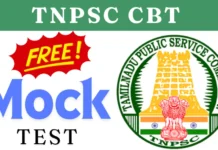

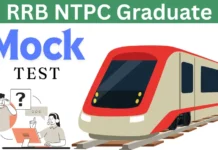





![Percentage Questions Short Tricks in Hindi [PDF Download] percentage shortcut tricks pdf in hindi](https://examtyari.xyz/wp-content/uploads/2023/11/percentage-shortcut-tricks-pdf-in-hindi.webp)



